If you know fashion then you know the iconic red letters of H&M clothing is on every social channel and store wishlist of every young person on the planet! This H&M SWOT analysis will highlight how this iconic brand transformed inexpensive clothing.
Similarly to the popular athletic brand Nike, they are simply unstoppable. The Hennes & Mauritz, widely known as the H&M group, is a Swedish corporation founded in 1947 specializing in designing and selling clothing and accessories. The company operates in around 60 countries and has a strong internet presence. H&M is the world’s second-largest apparel shop, known for its fast-fashion items. Although ordinary customers may not buy a garment from a premium brand, they still want to appear fashionable at a price point that they can afford.
According to statista.com, the H&M Group’s global net sales in the fiscal year 2020 were at 20.2 billion US dollars.
Table of Contents
H&M SWOT Analysis – At A Glance
| Company Name | H&M |
| Industry | Retail |
| Founded | 1947 |
| Founders | Erling Persson |
| CEO | Helena Helmersson |
| Headquarter | Stockholm, Sweden |
| Annual Revenue | $24.8 Billion (FY 2019) |
| Website | www.hm.com |
H&M SWOT Analysis Overview Template
SWOT analysis is a compelling dynamic process that necessitates close collaboration between several departments within a company. The fundamental goal of a SWOT Analysis is to figure out what methods a company can use to capitalize on external opportunities, mitigate threats, build on and defend H&M’s strengths, and eliminate its weaknesses. H&M is a market leader in its sector. It sustains its place in the industry by meticulously evaluating and monitoring its SWOT analysis.
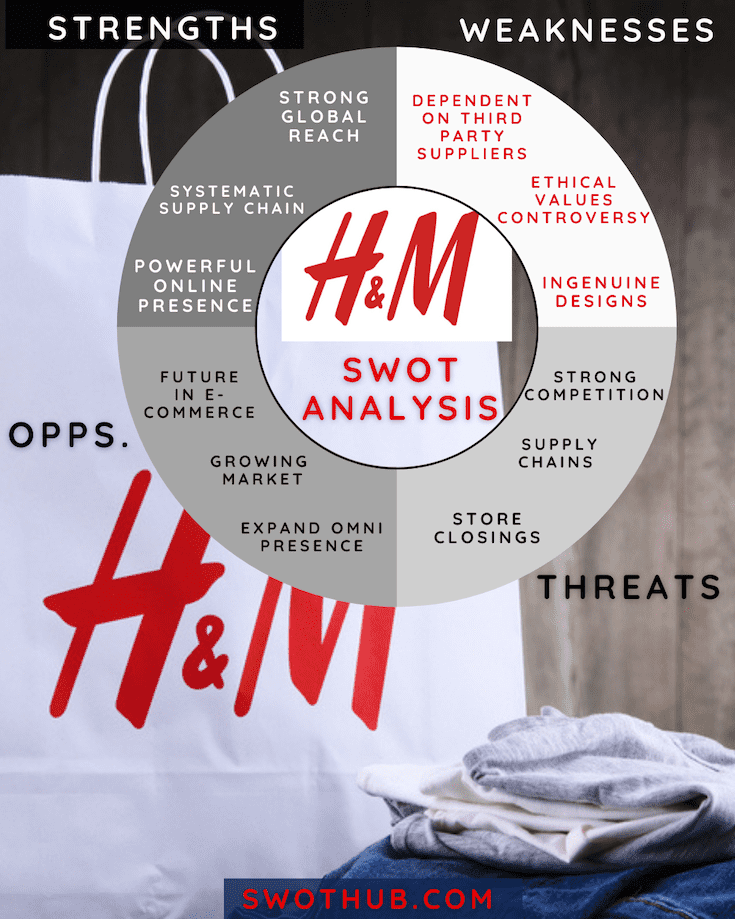
- You May Also Like: Textile Industry SWOT Analysis
H&M SWOT Analysis is an approach that H&M management may utilize to undertake an organizational situational analysis. It will concentrate on the internal and external factors affecting the world’s leading clothing fashion brand.
H&M SWOT Analysis Strengths
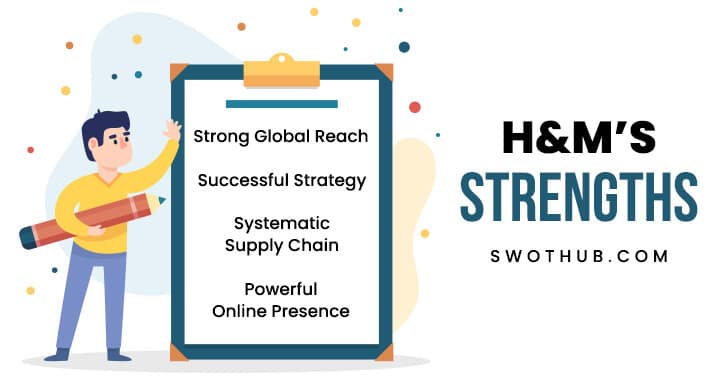
Being one of the industry’s leading corporations, H&M possesses many assets that enable it to survive in the marketplace. H&M SWOT Analysis strengths allow it to defend market share in existing areas and break into new ones.
Strong Global Reach: In recent years, H&M has moved into new continents like Asia and Africa. The company’s worldwide solid presence allows them to reduce business risks. H&M is well-represented in more than 70 countries, with over 5000 shops across six continents, and the firm anticipates annual growth of 10% to 15%.
Successful Strategy: H&M follows a fast fashion model, which provides designer tables with the most up-to-date fashion trends. This technique enables items to be delivered quickly from the designer’s table to the store, in contrast to the traditional approach of seasonal manufacturing, which requires a four- to six-month wait before a new collection is released. However, the corporation must convey the goods rapidly from the manufacturing site to the retail outlet.
Systematic Supply Chain: H&M makes effective use of supply chain management, ensuring that customers get their items on time. One of the benefits of working with several suppliers is that there’s a far lower likelihood of running out of stock. H&M keeps all of its locations well-stocked with current merchandise, and any supply concerns that arise are immediately rectified.
Powerful Online Presence: H&M has an effective E-Commerce strategy that adequately serves the online market. Companies that effectively use the internet can gain a significant competitive edge. It uses third-party platforms and its main website to reach more online customers and increase E-Commerce sales.
H&M SWOT Analysis Weaknesses
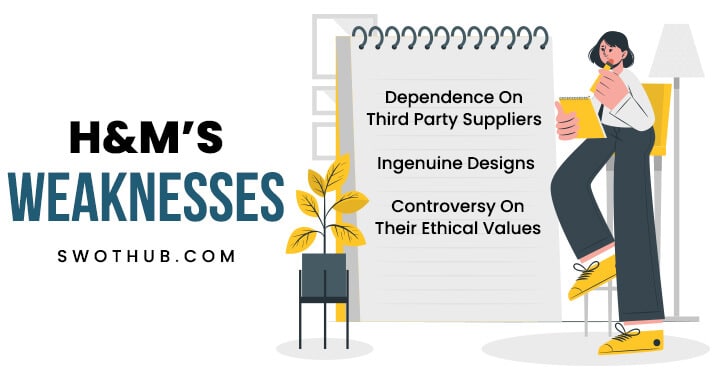
Weaknesses are areas in which H&M can improve. Planning is about making decisions, and weaknesses are internal aspects where a corporation may strengthen its competitive edge and tactical posture by adopting the H&M SWOT analysis.
Dependence On Third-Party Suppliers: H&M outsources product manufacture to over 800 separate vendors, resulting in a reduced production control level. Vendor overdependence can impair the company’s order obligations, and any negative customer experience can harm the brand’s reputation. While this approach has helped the company succeed, it also can be risky because the suppliers can take all the credit.
Ingenuine Designs: The problem with H&M’s designs is its reliance on large designer companies to create fashion trends. H&M creates inexpensive apparel, relies on many independent suppliers, and follows the trends set by luxury companies. This is a significant flaw since fashionistas are driven to new designs rather than current fashion trends. They don’t have any unique designs that are identifiable as H&M.
Controversy On Their Ethical Values: Many fashion critics argue that the brand copies the work of other designers and enterprises. In 2018, the brand sparked controversy when it sold a hoodie with a black kid model wearing it with the phrase “Coolest Monkey in the Jungle.” Customers worldwide were outraged, and they decided to boycott its products for encouraging racism.
H&M SWOT Analysis Opportunities

Following years of recession and low industry growth, this H&M SWOT Analysis will identify opportunities for them to gain new clients and expand their market share. It will enable the organization to retain current customers by offering outstanding service while also attracting new customers by giving extra value-oriented products.
Future in E-Commerce: The online marketplace had been steadily expanding, but as the pandemic spread, more people became aware of the advantages of online shopping. H&M has a solid web presence, but there is always the potential for development, especially given that the internet industry is developing quicker than ever before. To service a bigger market, they must also grow their E-commerce platform. E-commerce has the potential to be the future of the garment business, and H&M has to maximize its usage of the platform.
Growing Market: Because H&M sells items at a low cost, the Asian and African markets would be ideal for the brand. There is a rising market of middle-income households in emerging nations that like fashion and flair and can afford it. There are various developing areas with high sales potential, and the corporation would be good to explore these opportunities.
H&M SWOT Analysis Threats
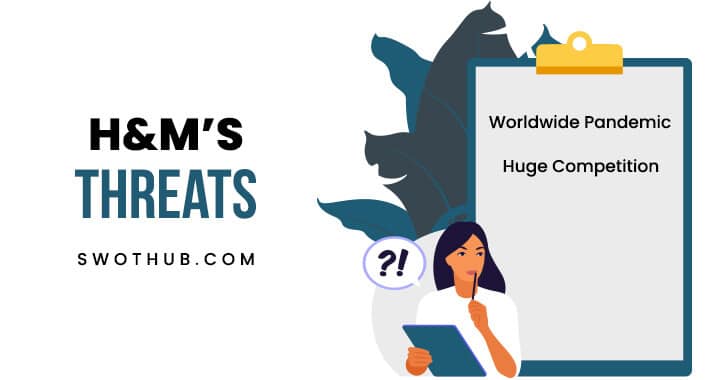
Since the organization operates in many countries, some risks need to be addressed. In the H&M SWOT Analysis, we discovered several threats for the company, and if they can overcome the challenges, it will be beneficial to them.
Worldwide Pandemic: The continuous flow of raw materials and completed goods is critical to multinational corporations like H&M’s success. In the case of another worldwide pandemic in the future, lockdowns and quarantine might disrupt the supply chain, reducing H&M’s sales and profitability. Because H&M is shutting physical locations and shifting its retail operation to Internet platforms, its previous growth model cannot be employed as an immediate approach.
Huge Competition: H&M has to find tactics to keep ahead of the fast fashion market competition, which has been highly cutthroat in recent years. Gucci, Zara, Gap, and Macy’s are some of the most competitive brands. H&M’s competitors attempt to gain market share and lower demand for their items.
Conclusion and Recommendations for H&M
Here are some recommendations for H&M’s future development:
- They should concentrate on improving customer service through warehouse networks and optimizing online shopping.
- Instead of being versatile, they should target a certain group. The improved understanding of its target clients leads to more customized products, resulting in stronger customer loyalty and more profits.
- H&M may collaborate with various fashion-focused media outlets to showcase their new items, which are presented in the same way as luxury items but at a lower price.
FAQs for H&M SWOT Analysis
What are the weaknesses of H&M?
H&M faces challenges related to its fast fashion model, which can lead to environmental impact and ethical concerns in the supply chain. It also competes with online retailers and other fast fashion brands.
What are the opportunities at H&M?
H&M has opportunities to expand its sustainability efforts, invest in e-commerce, and explore new markets globally. Collaborations with designers and influencers can also boost brand appeal.
Where does H&M get their clothes from?
H&M sources its clothes from various suppliers globally, including countries like Bangladesh, China, Turkey, and India. The company has an extensive supply chain network.
Where is H&M popular?
H&M is popular in many countries, but its major markets include Europe (especially Sweden, Germany, and the UK), the United States, China, and other Asian countries. It continues to expand its presence worldwide.
Following a thorough review of the H&M SWOT Analysis, we have found that H&M is the world’s top fast-fashion clothing brand. However, in order to increase profits, businesses must maximize their growth potential. To get the business back on track, H&M must focus on resolving supply chain and expense issues.

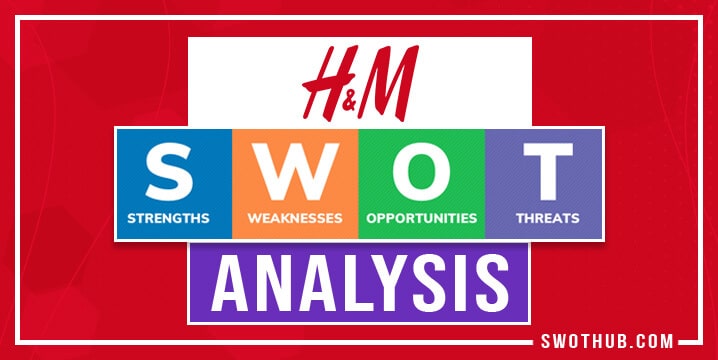
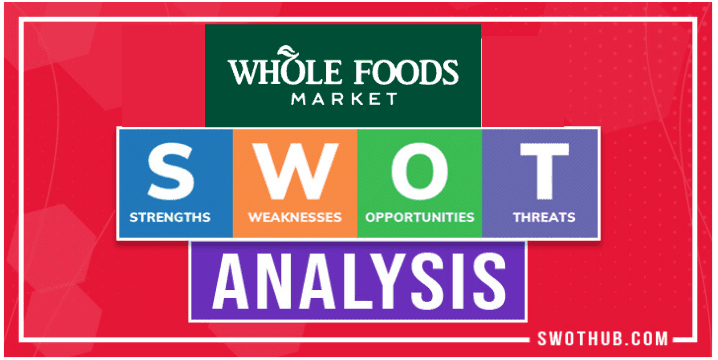

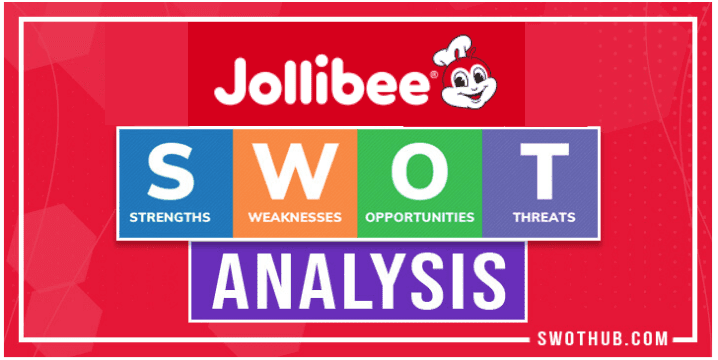
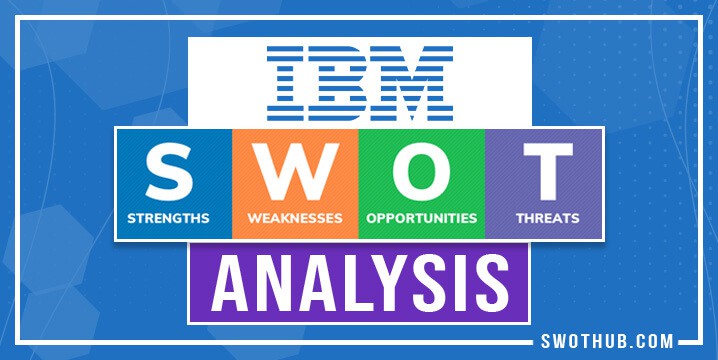
Pingback: Macy's SWOT Analysis 2022: A Shop-Worthy & Detailed Report! | SWOT Hub